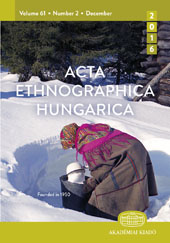The Collection of Anabaptist Pottery of the Moravian Gallery in Brno
The Collection of Anabaptist Pottery of the Moravian Gallery in Brno
Author(s): Andrea HusseiniováSubject(s): Archaeology, Cultural history, Museology & Heritage Studies, Visual Arts
Published by: Akadémiai Kiadó
Keywords: Anabaptist faience; Moravian gallery in Brno; pottery; Vacenovice;
Summary/Abstract: Anabaptist faience is the most important local phenomenon in the history of European ceramics. The holdings of the Moravian Gallery in Brno include a small collection of this pottery type (at present nearly 60 items). The start of this collection goes back to the early years after the founding of the Moravian Industrial Museum, the predecessor of today’s Museum of Applied Arts of the Moravian Gallery in Brno. Its core comprises items acquired by the museum as early as in the 19th century. Many of the later acquisitions were originally part of private collections, such as a set of pottery from the collector František Kretz. The oldest dated collection item is a tazza with a perforated rim, bearing a Dietrichstein emblem and the date 1607. With regards to form there is an obvious prevalence of flat ware. The archaeological excavations carried out in the 1950s by specialists from the Museum of Applied Arts in Vacenovice (Hodonín district) made a significant contribution to research into the manufacture of Anabaptist faience. The outcome of these activities was a large exhibition of Anabaptist faience at the end of 1955 and the start of 1956, accompanied by the publication of two catalogues (1955, 1961).
Journal: Acta Ethnographica Hungarica
- Issue Year: 60/2015
- Issue No: 2
- Page Range: 387-394
- Page Count: 8
- Language: English
- Content File-PDF

